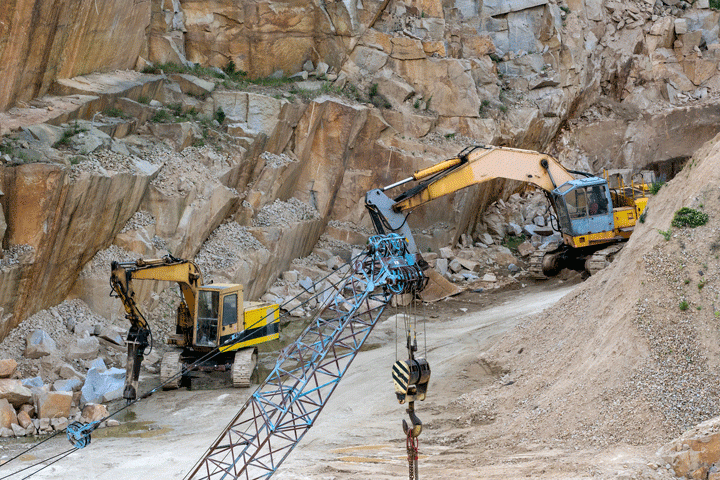The Covert Treasures: Exploring Granite Quarries in South Africa
The Covert Treasures: Exploring Granite Quarries in South Africa
Blog Article
Unveiling the Mysteries of Granite Quarrying: Where Toughness and Style Meet
The globe of granite quarrying is a realm where the raw toughness of nature assembles with human creativity to develop structures that stand the examination of time with an air of style. From the midsts of quarries to the thorough polishing in workshops, the procedure of transforming granite right into architectural marvels is an intricate dance of practice and innovation. As we peer right into the depths of this old craft, we start to reveal the covert details that shape the really significance of our built setting.
The Origins of Granite Quarrying
In the annals of architectural background, the origins of granite quarrying are shrouded in a tapestry of old craftsmanship and geological marvels. Going back to ancient Egypt and Mesopotamia, the extraction of granite from quarries marked the beginning of a trip that would ultimately bring about the development of a few of the globe's most iconic frameworks.
Granite quarrying's roots can be mapped to the proficient artisans who recognized the stone's durability and visual allure. Via a combination of primitive devices and sheer resolution, these early quarry workers uncovered granite blocks that would come to be the foundation of human beings.
As human beings developed, so did the methods of quarrying granite. The Romans, renowned for their design expertise, developed sophisticated methods for removing granite to construct monoliths, holy places, and roadways that stood the examination of time.
The legacy of these ancient quarrying methods proceeds to shape contemporary architecture, with granite remaining an icon of toughness and elegance in construction tasks around the world. (granite quarries in south africa)
Devices of the Quarrying Trade
The development of granite quarrying methods from ancient human beings to modern-day times highlights the critical role played by the tools of the quarrying profession in forming the industry's practices. In old times, quarrying devices were basic, commonly including knives, hammers, and wedges made from materials like bronze or iron. These devices required substantial workforce and time to extract granite blocks from quarries.

Additionally, the introduction of pneumatically-driven tools and high-powered equipment has considerably reduced the physical labor required in quarrying procedures, improving employee security and productivity. As the quarrying industry remains to innovate, the devices of the profession remain at the center of driving development and shaping the future of granite removal.
Extracting Blocks of Granite
Making use of precision equipment and advanced methods, the removal of granite obstructs from quarries has actually become an innovative procedure in the contemporary quarrying sector. The initial step entails determining the place and size of the granite down payment to figure out the most efficient removal method. When a suitable site is picked, the removal process starts with the boring of holes for the placement of dynamites. Managed blasting methods are after that employed to break apart the granite into convenient areas.

Polishing and Ending Up Strategies
To achieve a remarkable surface on granite blocks, proficient artisans employ a collection of precise sprucing up and completing strategies. After the first removal and forming processes, the granite obstructs go through a complete polishing phase to boost their all-natural charm and resilience. One usual method made use of in brightening granite is ruby abrasion, where commercial rubies are used to grind and polish the stone to a smooth coating. This process not just develops a shiny surface area yet additionally makes sure uniformity in shade and structure across the granite block.
Along with sprucing up, completing methods are put on further refine the granite's look. These techniques may consist of flaming, sharpening, or cleaning, each offering one-of-a-kind textures and finishes to browse around this web-site suit different aesthetic preferences. Flaming, for instance, involves exposing the granite surface to high temperatures to create a harsh, textured coating, perfect for outdoor applications where slip-resistance is important. Honing, on the other hand, offers a matte surface that is smooth to the touch, excellent for interior countertops and flooring. By very carefully choosing and using these polishing and finishing strategies, artisans can change raw granite blocks into exquisite items that display both strength and style.

Ecological Influence and Sustainability
With the expanding emphasis on ecological awareness in the industry, granite quarrying practices are progressively looked at for their effect on natural deposits and lasting sustainability. Quarrying for granite can have considerable ecological ramifications. The removal procedure frequently entails making use of heavy equipment, dynamites, and huge amounts of water, resulting in habitat damage, soil erosion, and water air pollution. In addition, the transportation of granite from quarries to processing centers generates carbon exhausts, even more adding to ecological deterioration. granite quarries in south africa.
To reduce these influences and guarantee sustainability in granite quarrying, industry stakeholders are adopting numerous procedures. Implementing sophisticated modern technologies to reduce energy intake and water usage, recovering quarried land for ecological remediation, and promoting liable sourcing practices are some strategies being utilized. In addition, accreditations such as the Woodland Stewardship Council (FSC) and the Leadership in Energy and Environmental Style (LEED) assistance customers recognize eco-friendly granite items.
Verdict
In verdict, granite quarrying is a procedure that requires specialized devices and strategies to remove blocks of granite and brighten them to a high degree of surface. While the ecological see effect of quarrying can be considerable, efforts are being made to improve sustainability his response methods in the sector. In general, granite quarrying is a delicate balance in between harnessing the toughness and style of this natural rock while minimizing its influence on the atmosphere.
Report this page